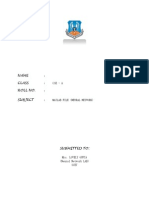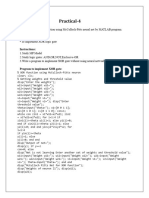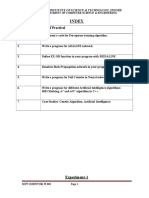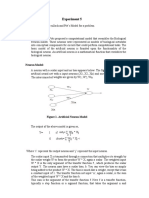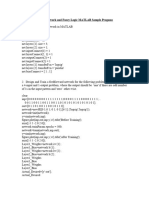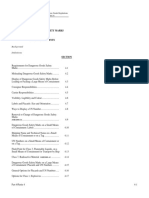0% found this document useful (0 votes)
43 views16 pagesAbhishek Soft Computing Practical File
The document is a practical file for a Master of Technology program in Computer Science and Engineering, focusing on Soft Computing and MATLAB programming. It includes various programs demonstrating operations such as finding the greater of two numbers, performing set operations, and implementing neural network functions like Hebb net, McCulloch-Pitts net, and Perceptron net. Each program is accompanied by aims, code snippets, and expected outputs.
Uploaded by
thegauravvvCopyright
© © All Rights Reserved
We take content rights seriously. If you suspect this is your content, claim it here.
Available Formats
Download as DOCX, PDF, TXT or read online on Scribd
0% found this document useful (0 votes)
43 views16 pagesAbhishek Soft Computing Practical File
The document is a practical file for a Master of Technology program in Computer Science and Engineering, focusing on Soft Computing and MATLAB programming. It includes various programs demonstrating operations such as finding the greater of two numbers, performing set operations, and implementing neural network functions like Hebb net, McCulloch-Pitts net, and Perceptron net. Each program is accompanied by aims, code snippets, and expected outputs.
Uploaded by
thegauravvvCopyright
© © All Rights Reserved
We take content rights seriously. If you suspect this is your content, claim it here.
Available Formats
Download as DOCX, PDF, TXT or read online on Scribd
/ 16









